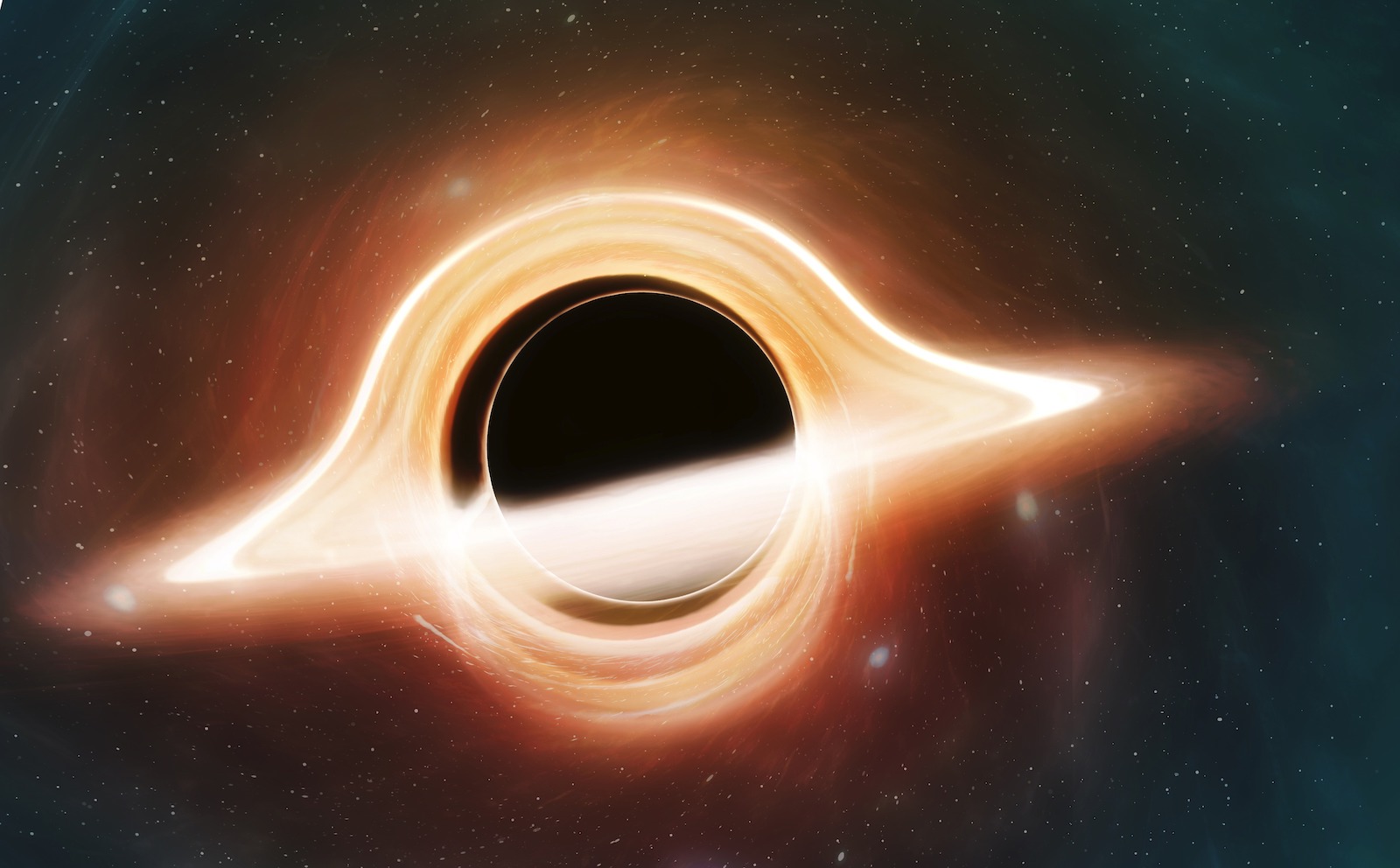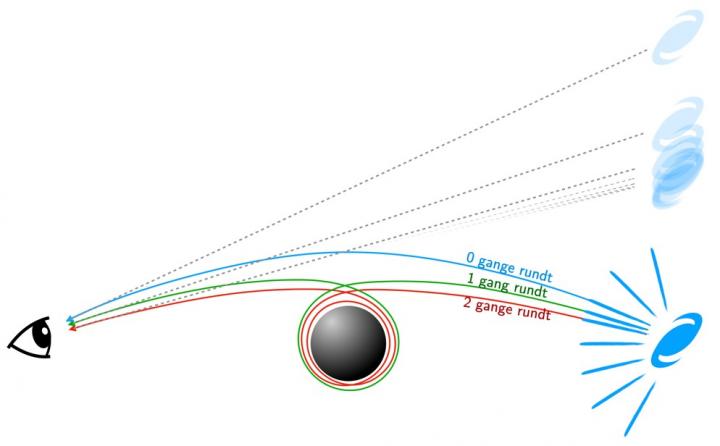Black holes warp the universe into a grotesque hall of mirrors

Imagine a galaxy reflected in a fun house hall of mirrors. You'd see the galaxy, repeated again and again, with each image becoming more grotesque and distorted. That's how the universe looks near the event horizon of a black hole, one of the most warped places in the cosmos.
While physicists had some previous ideas about what such regions looked like, a new calculation has shown exactly what you would see around black holes, opening up potential new ways to test Einstein's theory of general relativity.
Around and around
The area near a black hole is very strange indeed. Looking directly at the heavy object wouldn't give your eyes much to focus on; light rays get swallowed by the black hole's event horizon, the point at which nothing can ever escape its massive gravitational influence.
Related: 10 huge black hole findings
But if you were to place a galaxy behind the black hole and then look off to the side, you'd see a distorted image of the galaxy. That's because some light from the galaxy would barely graze the edges of the black hole, without falling in.
Because of the black hole's extreme gravity, such light would get bent toward your line of sight. Strangely, the galaxy would appear to be far away from the black hole, not directly behind it.
The gravity around black holes is so intense, and space-time is so incredibly warped, that at a certain distance, light itself can orbit the black holes. Some of the light from a background galaxy even gets trapped, looping forever.
Sign up for the Live Science daily newsletter now
Get the world’s most fascinating discoveries delivered straight to your inbox.
However, the light would need to come the exact right distance from the black hole to get trapped in an orbit. It can also hit the black hole at an angle that allows it to make one (or many) loops before eventually escaping.
Looking at the edge of the black hole, your eyes would see one image of the background galaxy from its deflected light. Then, you would see a second image of the galaxy from light rays that managed to make a single orbit before escaping — and then again from light rays that made two orbits, and then three and so on.
For decades, physicists have known through simple estimates that each image is e^2𝜋 times closer than the last.
In that formula, e is the base of the natural logarithm, and it equals roughly 2.7182. Pi is another irrational number that is about 3.14159, so e^2𝜋 comes out to a number very close to 500. That means each repetition of the same background object is about 500 times closer to the edge of the black hole than the last.

Doing it the hard way
While physicists could get that simple result using pen-and-paper calculations, they weren't sure if that special factor of 500 would be completely accurate if they looked closely at the behavior of the complex space-time curvature near black holes.
In results published in a new study, Albert Sneppen, a graduate student at the Niels Bohr Institute at the University of Copenhagen in Denmark, used numerical methods to simulate the physics of light rays orbiting (and escaping) the vicinity of black holes. He verified that the factor of 500 remained the same in a highly accurate treatment. His results appeared July 9 in the journal Scientific Reports.
"There is something fantastically beautiful in now understanding why the images repeat themselves in such an elegant way," Sneppen said in a statement.
Sneppen found that the factor of 500 applies only to simplified, unmoving black holes. Black holes in the real universe rotate, which changes the way light orbits them — which, in turn, changes how far apart the images appear.
"It turns out that when it rotates really fast, you no longer have to get closer to the black hole by a factor 500, but significantly less," Sneppen said. "In fact, each image is now only 50, or five, or even down to just two times closer to the edge of the black hole."
Because the rotation of the black hole twists space-time around it, each successive image of the background object appears flatter. Thus, the farthest image will appear relatively undistorted, while the closest image may be completely unrecognizable.
Into the fun house
Technically, there are an infinite number of repeated images of background objects, each one closer to the event horizon. In practice, humans might never see them, because only a few would be resolvable, even with the most powerful telescopes.
But those few would provide a powerful perspective into the heart of general relativity, the mathematical theory that describes gravity.
In 2019, the Event Horizon Telescope, a network of dishes spanning the entire globe, generated the first image of the "shadow" of a black hole cast on its surrounding gas and dust. That telescope wasn't powerful enough to capture the multiple fun-house-mirror images of background objects, but future telescopes could.
Comparing how real-world objects differ from what we expect from calculations like Sneppen's would provide an unprecedented test of general relativity. If, for example, there were a supernova — a superpowerful explosion of a dying star — behind the black hole, we would get to see that supernova go off multiple times. Each image would be delayed by a certain amount, depending on how many times it orbited the black hole, allowing researchers to compare their theories with reality.
We would just have to be willing to stare into the void long enough.
Originally published on Live Science.

Paul M. Sutter is a research professor in astrophysics at SUNY Stony Brook University and the Flatiron Institute in New York City. He regularly appears on TV and podcasts, including "Ask a Spaceman." He is the author of two books, "Your Place in the Universe" and "How to Die in Space," and is a regular contributor to Space.com, Live Science, and more. Paul received his PhD in Physics from the University of Illinois at Urbana-Champaign in 2011, and spent three years at the Paris Institute of Astrophysics, followed by a research fellowship in Trieste, Italy.









